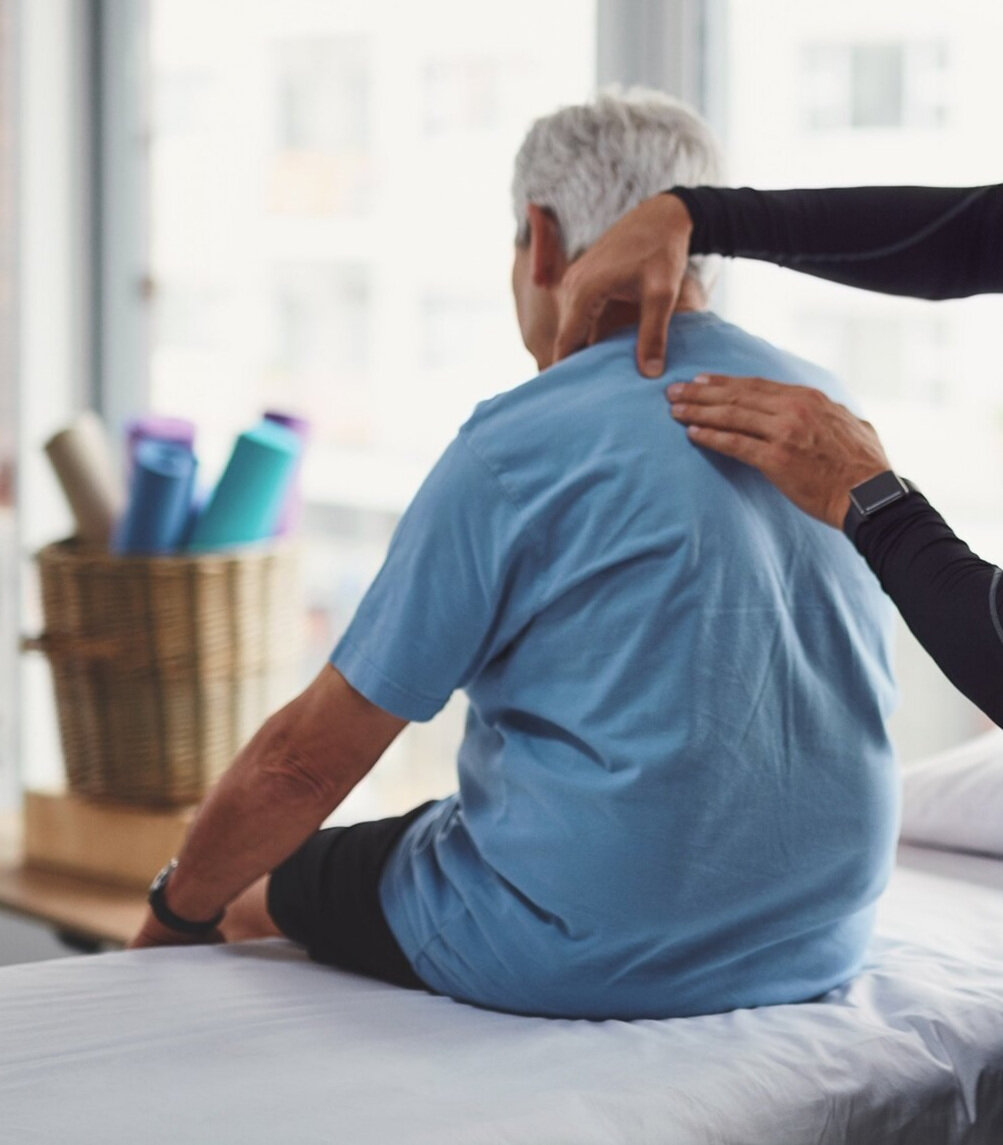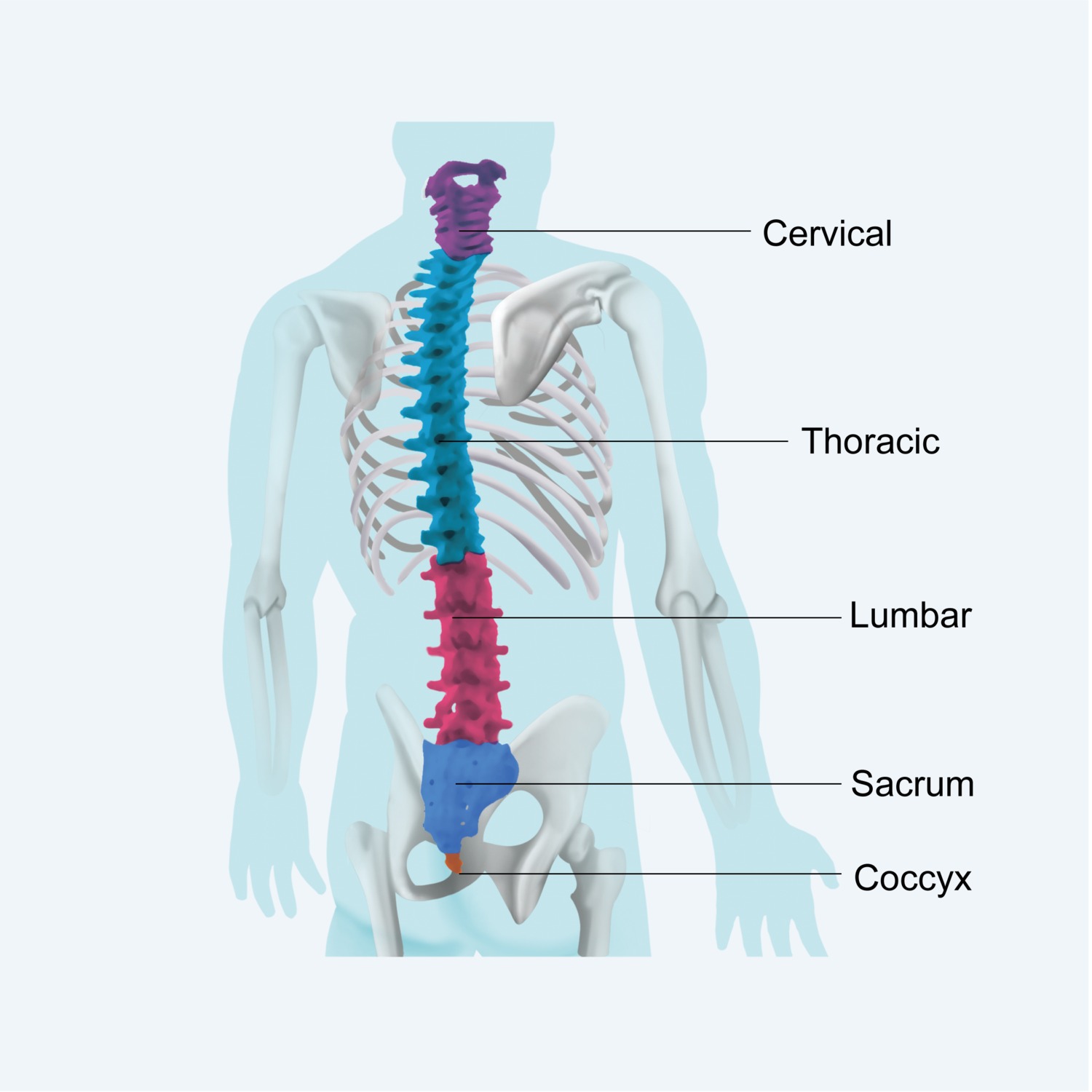The Spine

The spine is one of the most supportive but complex structures in the human body. It is composed of many bones, discs, and ligaments that support the weight of the body and allow for movement and posture. Due to the fundamental nature of the spine, it is one of the most frequently injured joints and can easily impact activities of daily living.
If you’re experiencing spinal pain, call one of our offices in San Francisco or book an appointment online to get started.
Spine Anatomy
The spine consists of 24 bones, also known as vertebrae, that are separated into the cervical, thoracic, and lumbar spine. Each of these vertebrae are separated by an intervertebral disc that protects the bones from rubbing against each other and aids in shock absorption. Around each of these structures, there’s a complex set of ligaments and joints that provide structure.
The cervical spine, also known as the neck, has 7 vertebrae (C1-C7). After the cervical spine are the 12 thoracic vertebrae (T1-T12) that comprise the mid-back. Finally, the lower back, or lumbar spine has 5 vertebrae (L1-L5) followed by the sacrum and coccyx, also known as the tailbone. A healthy functioning spine typically has an S-shaped curve to allow for proper range of motion of the back.


What causes spinal pain?
What causes spinal pain?
Neck and back pain are some of the most commonly treated conditions in orthopedics. They vary from simple muscular pain that can come from a muscle spasm, exercise, poor posture, or stress to more complex issues such as fractures of the vertebra or a herniated disc. These can present as localized neck and back pain or radiating pain down the arm or leg.
Treatment
At Pacific Crest Orthopedics we customize a treatment plan to meet your individual needs. Most conditions in the spine can be treated with conservative measures including physical therapy, medication management, and activity modification. We also work with you to discuss whether imaging, including X-rays and MRIs, are right for your condition, and order them when needed. For more complex cases where surgery or local corticosteroid injections are indicated as the best option, we work with some great spinal surgeons in the Bay Area to get you in for an appointment as quickly as possible.
Ephraim Dickinson, MD at Pacific Crest Orthopedics has extensive experience treating your neck and back pain and providing therapies to prevent future problems and to keep you active and healthy. Don’t continue to suffer from spine-related pain. If you have questions about your back or neck pain, call Pacific Crest Orthopedics in San Francisco or use the online booking tool to schedule an appointment today.

Real Stories, Real Recovery.



